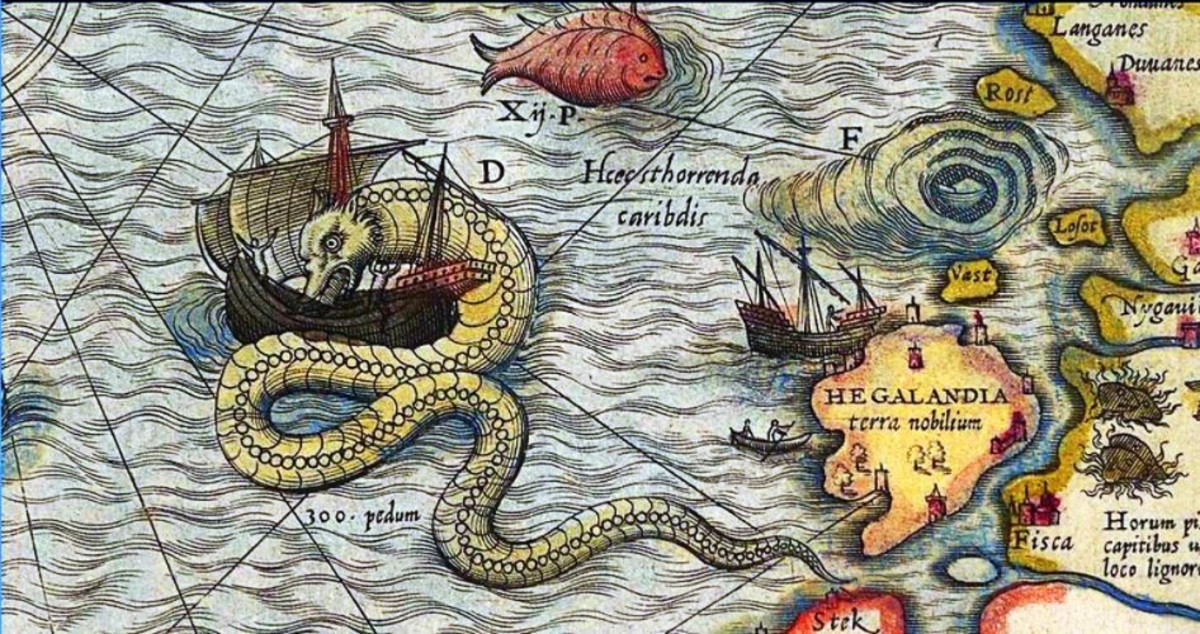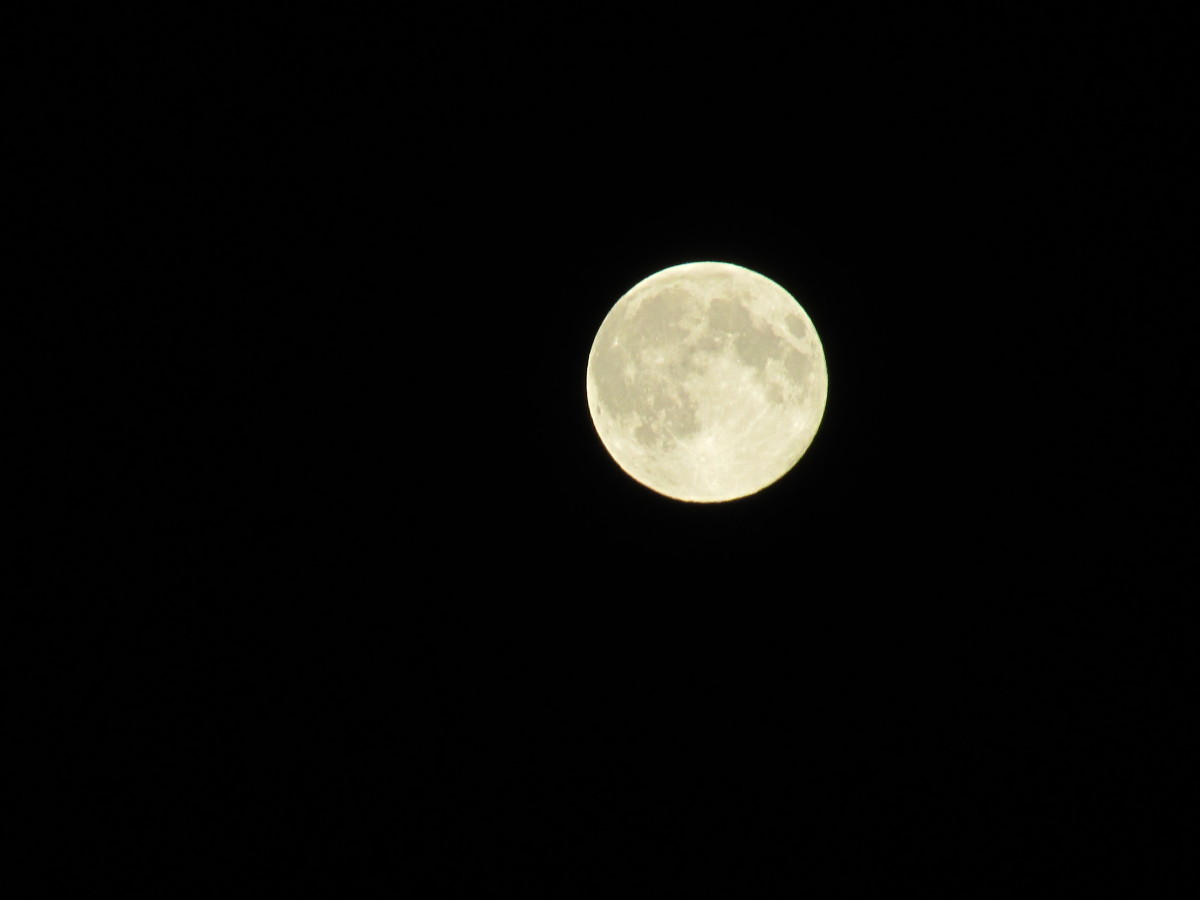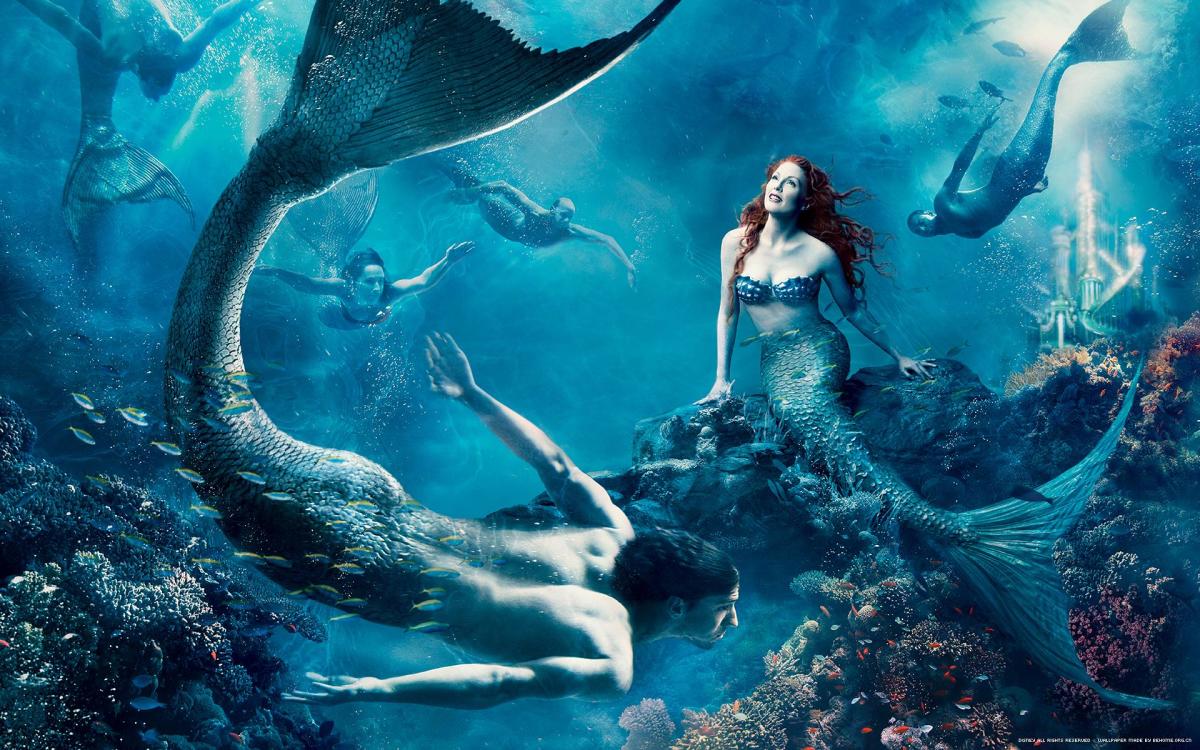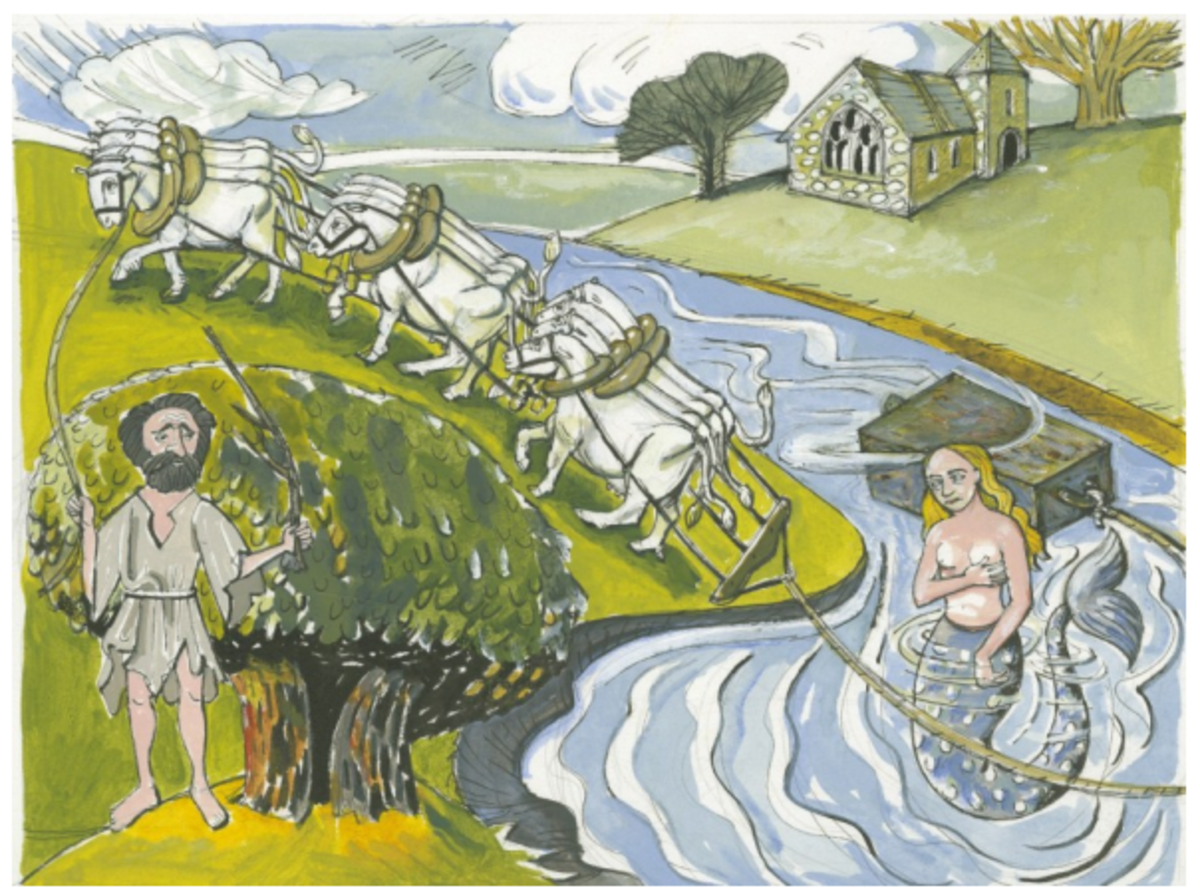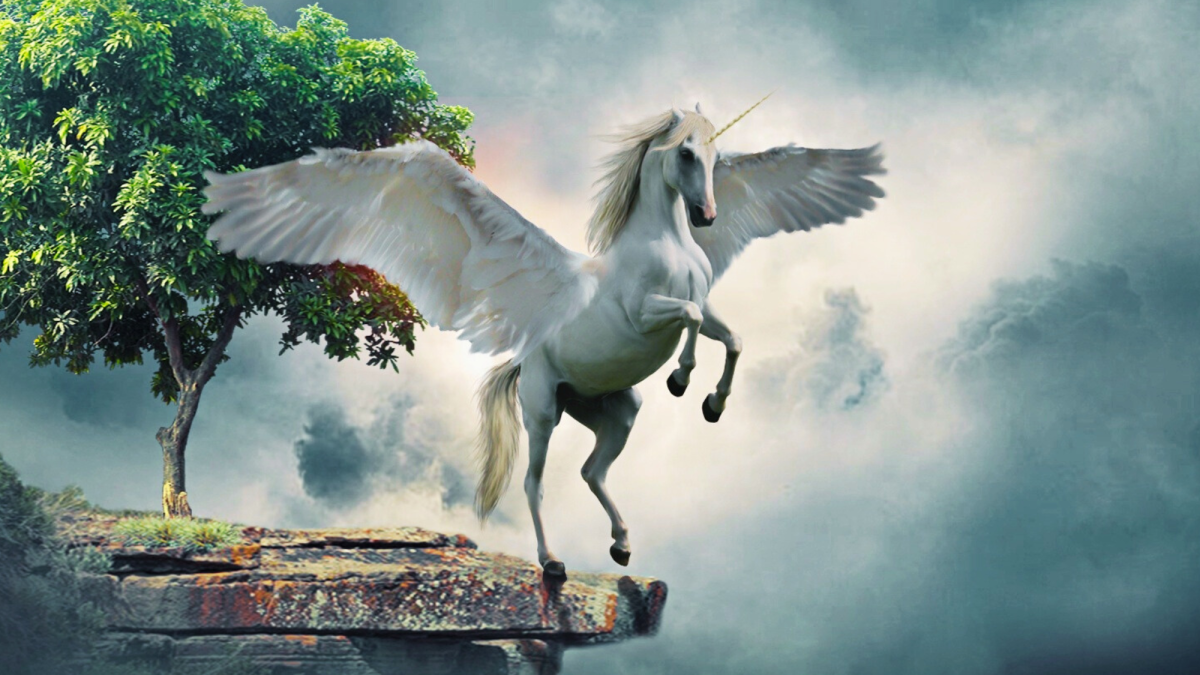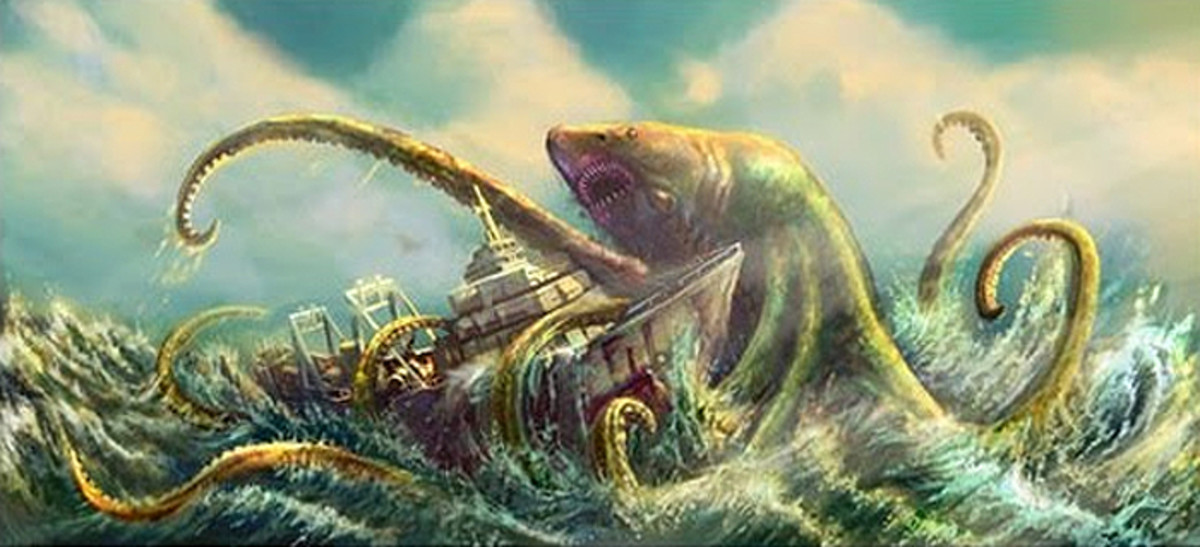- HubPages»
- Education and Science»
- Sociology & Anthropology»
- Folklore & Mythology»
- Legendary Creatures & Cryptids
10 Types of Sea Monsters

With typhoons, hurricanes, monsoons, tsunamis, whirlpools, storms, and a myriad of strange creatures that dwell in the sea, it's easy to see why many cultures developed the idea of scary monsters that inhabit the seas. Some may have been based on real animals that inhabit the sea while others take on humanoid forms. Some are straightforward about their malevolent intentions like the Kraken, while others like the sirens and the Aspidochelone use deception to lure mariners to their deaths.
Below are some of the nightmarish creatures that traders, fishermen, navigators, pirates, and other seafarers believed in at one point in time.
1. The Kraken
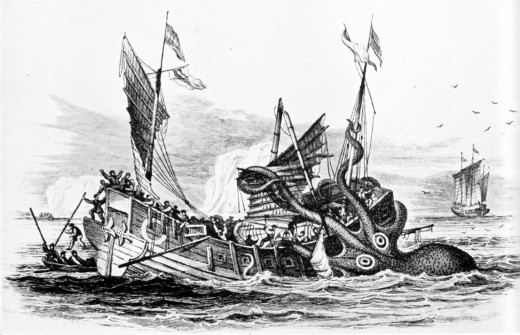
The Kraken is a giant squid that is supposedly able to destroy ships with its tentacles, drag them to the bottom of the ocean, and even swallow them. It lives in the waters near Norway and Greenland and was first mentioned in an Icelandic saga in the 13th century. Its name comes from the Norwegian word krake which means twisted. People still believed in their existence in the early 20th century: Pierre Dénys de Montfort, a malacologist or a person who studies mollusks(squid, octopuses, etc.), attributed ten sunken British warships to the Kraken.
Montfort also created some wonderful illustrations of how he envisioned the Kraken. One of them is pictured above. The malignant character of the Kraken has remained remarkably similar over the centuries. Even Disney did not try to make a nicer version of the Kraken for Dead Man's Chest.
Below is a fun commercial that features the Kraken:
2. The World Serpent
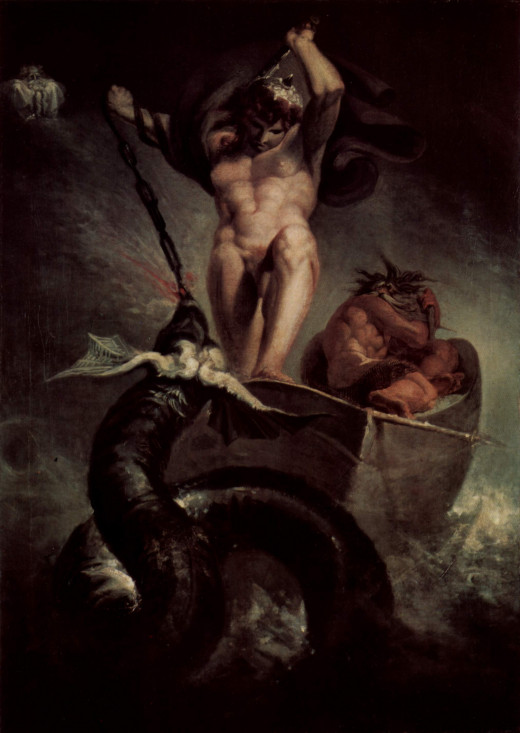
The World Serpent or Midgard Serpent is a sea monster from Norse mythology. It is an extremely large version of a sea serpent, so long in fact that it is able to encircle the world and clasp its own tail in its mouth. It was said to be fathered by Loki, a trickster god. The Vikings were thought to have carved dragon heads on to their ships to ward off this sea monster as well as other smaller sea serpents during their voyages.
3. Mermaids
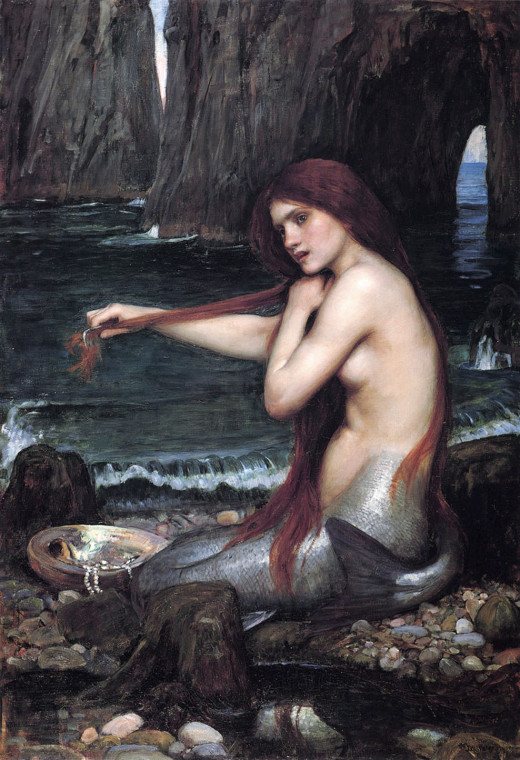
Unlike Ariel, in many older world traditions mermaids are not thought to have such a sweet disposition. Instead they are thought to drown sailors, cause shipwrecks, and summon storms. Their presence is widespread in folklore. Europe, Africa, and Asia all have described a creature like the mermaid. Italian navigator Christopher Columbus even claimed to have seen mermaids in the Caribbean.
After Hans Christian Andersen wrote The Little Mermaid in 1836, mermaids became a popular subject matter for painters and illustrators. The Pre-Raphaelite painters and Golden Age illustrators in particular enjoyed depicting mermaids.
Below is an interesting video from Animal Planet about how mermaids could have evolved:
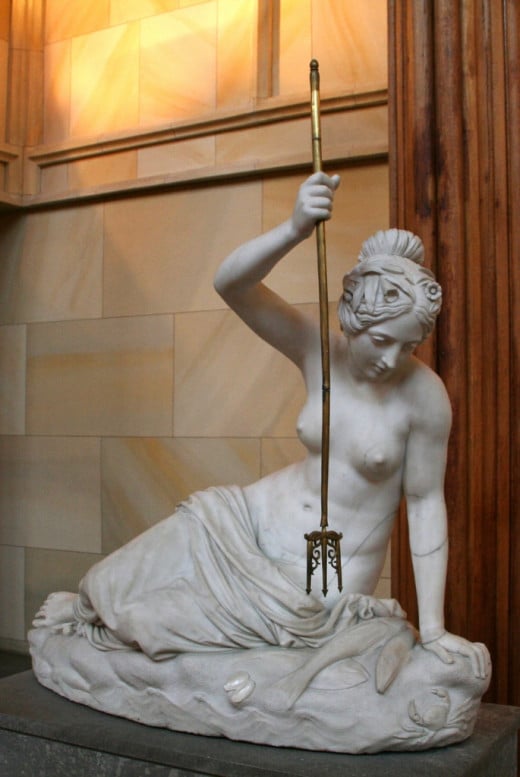
4. Nereids
Nereids or sea nymphs come from Greek mythology. Sea nymphs are associated with Poseidon and Poseidon's own wife was a sea nymph. Unlike mermaids and most other sea monsters, nereids were thought to help sailors. Although they dwell in the sea, nereids aren't usually depicted with fish tails like mermaids. Instead they appear like regular human beings.
5. Sea Serpents
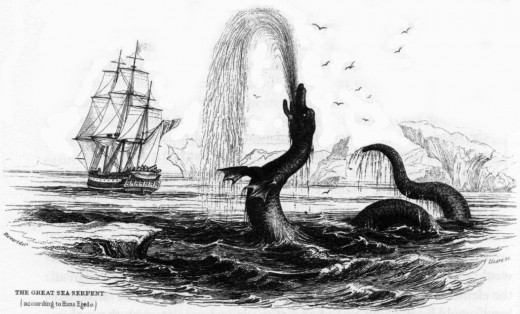
Sea serpents or sea dragons are one of the most common sea monsters. Because there have been so many sightings, it is believed that the sea serpent may refer to the oarfish, frilled shark, or even surviving descendents of the Jurassic Period like the plesiosaur or mosasaur. Cryptozoologists, who argue for the existence of sea serpents, have even attempted to classify different types of sea serpents into groups like Super Eels and Merhorses.
6. The Aspidochelone
According to medieval bestiaries, the Aspidochelone is a giant sea turtle that sailors often mistake for an island. It is so large that trees are even said to grow on its back. When sailors disembark on its back, it suddenly returns to the bottom of the ocean, drowning everyone. Like Leviathan, this sea turtle is also sometimes said to be a metaphor for Satan.
7. Leviathan
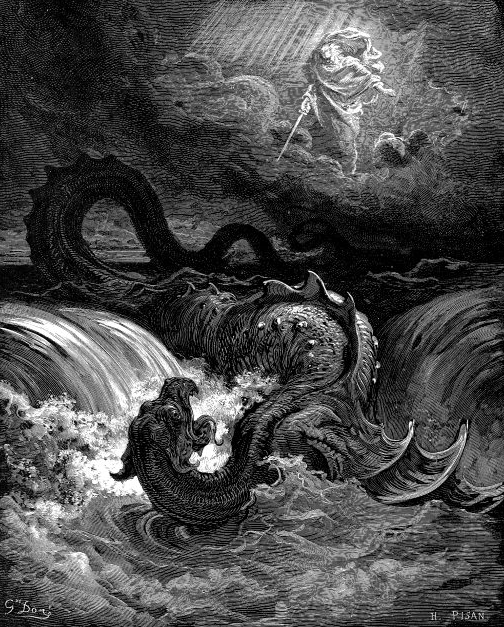
Leviathan is a sea creature mentioned in the Old Testament of the Bible. Essentially another sea serpent, Leviathan came to represent Satan during the Middle Ages. The Leviathan was large enough to eat whales and had glowing eyes. Creationists believe that Leviathan was a dinosaur who lived during biblical times. Jewish people believe that God will kill Leviathan and serve pieces of him at a banquet in Heaven.
8. Sirens
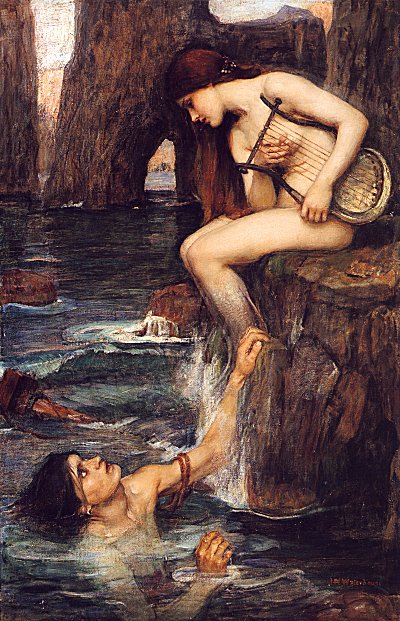
Like the Nereids, Sirens are also from Greek mythology, but instead of helping sailors they sing enchanting songs that lure sailors to rocky waters where their ships are wrecked on the rocks. The sirens took the form of beautiful women and were thought to eat the flesh of the sailors who came to them or tear them part. Sometimes instead of wrecking their ships, it is said that the siren song put the sailors to sleep and the sirens would then climb aboard their ship to prey upon the sleeping sailors.
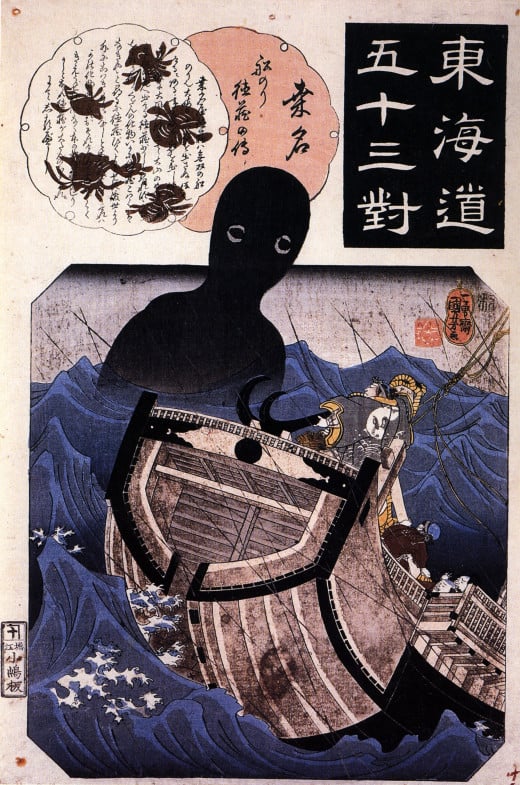
9. Umibōzu
The Umibōzu is a Yōkai or ghost from Japanese folklore, specifically the ghost of a drowned priest. Another unfriendly water being, the Umibōzu will upturn your ship if you speak to it. The Umibōzu mainly preys on fishermen and shipwrecked sailors. Today the Umibōzu is a recurring figure in many contemporary manga series.
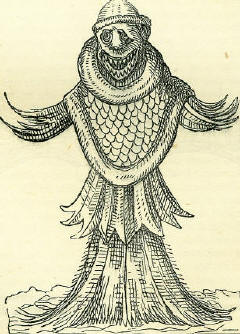
10. Sea Monk
The sea monk was a monster spotted in waters surrounding Scandinavian countries in the 16th century. It was seen off the coast of Zealand, Denmark's largest island, in 1546 and also off the coast of Poland in 1531. References to the sea monk have created a puzzle for cryptozoologists. This monster is usually thought to be either a hoax or a misidentified sea creature like a seal or shark. The idea of the sea monk is similar to Japan's Umibōzu.

